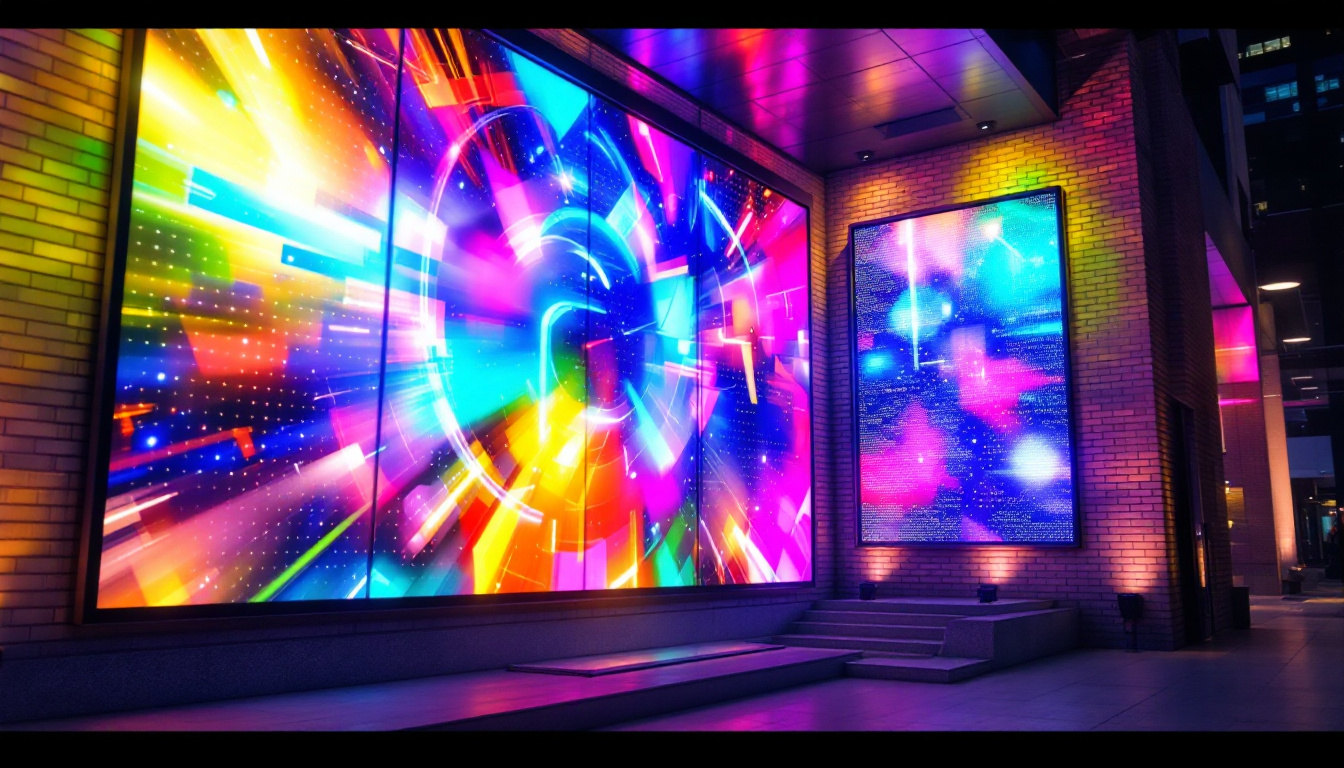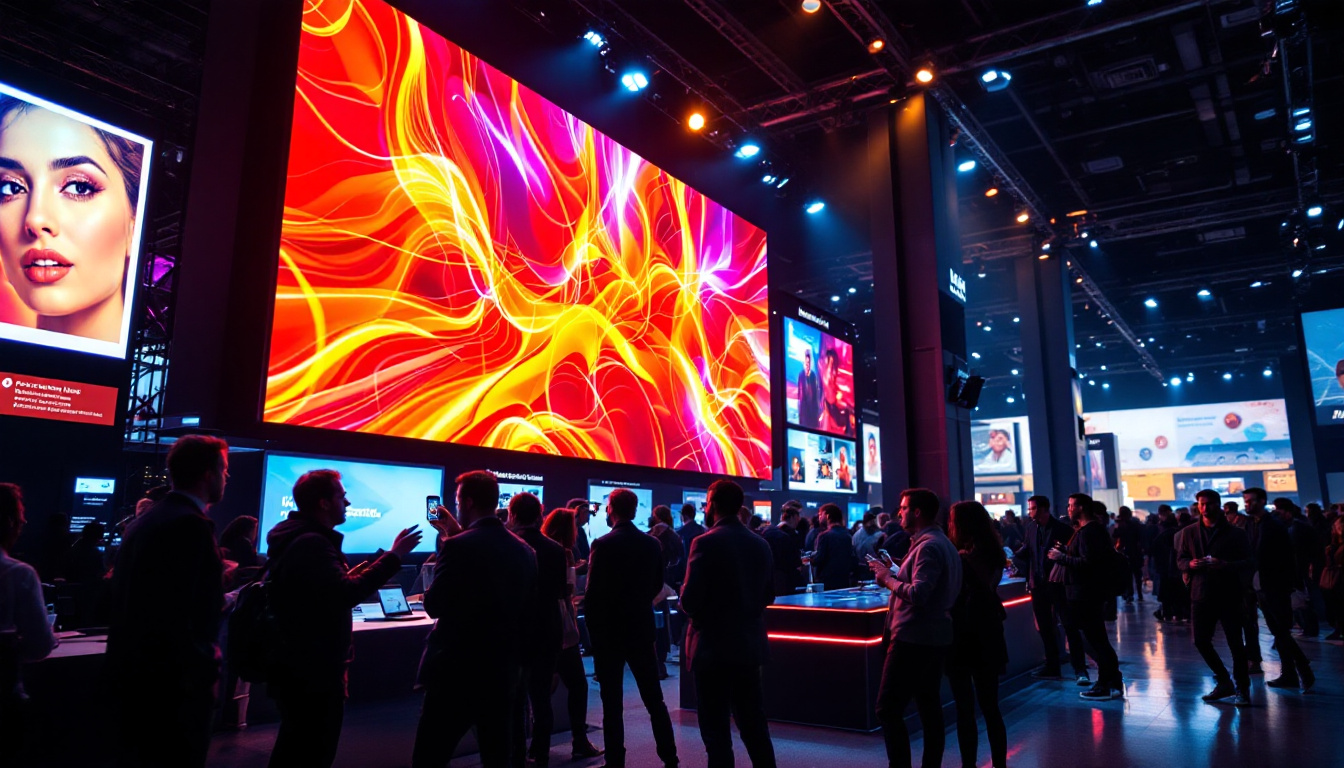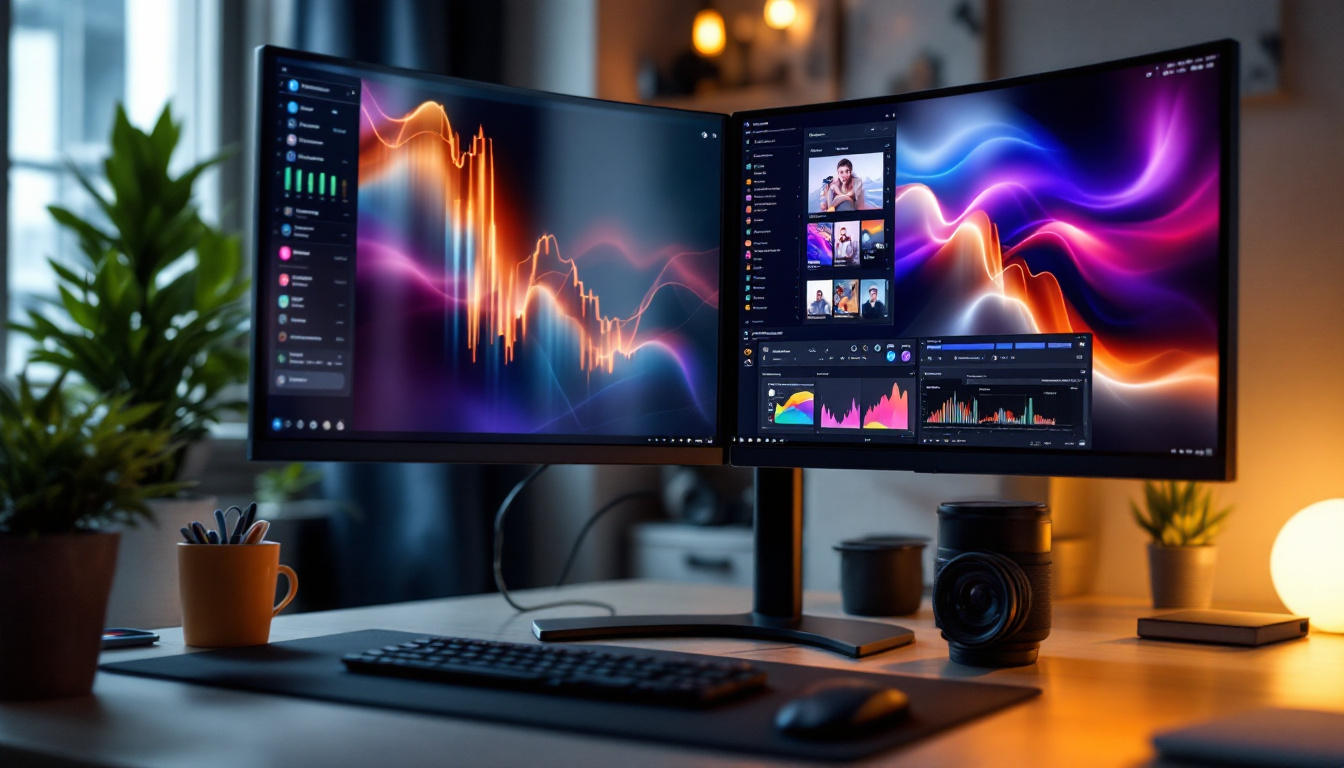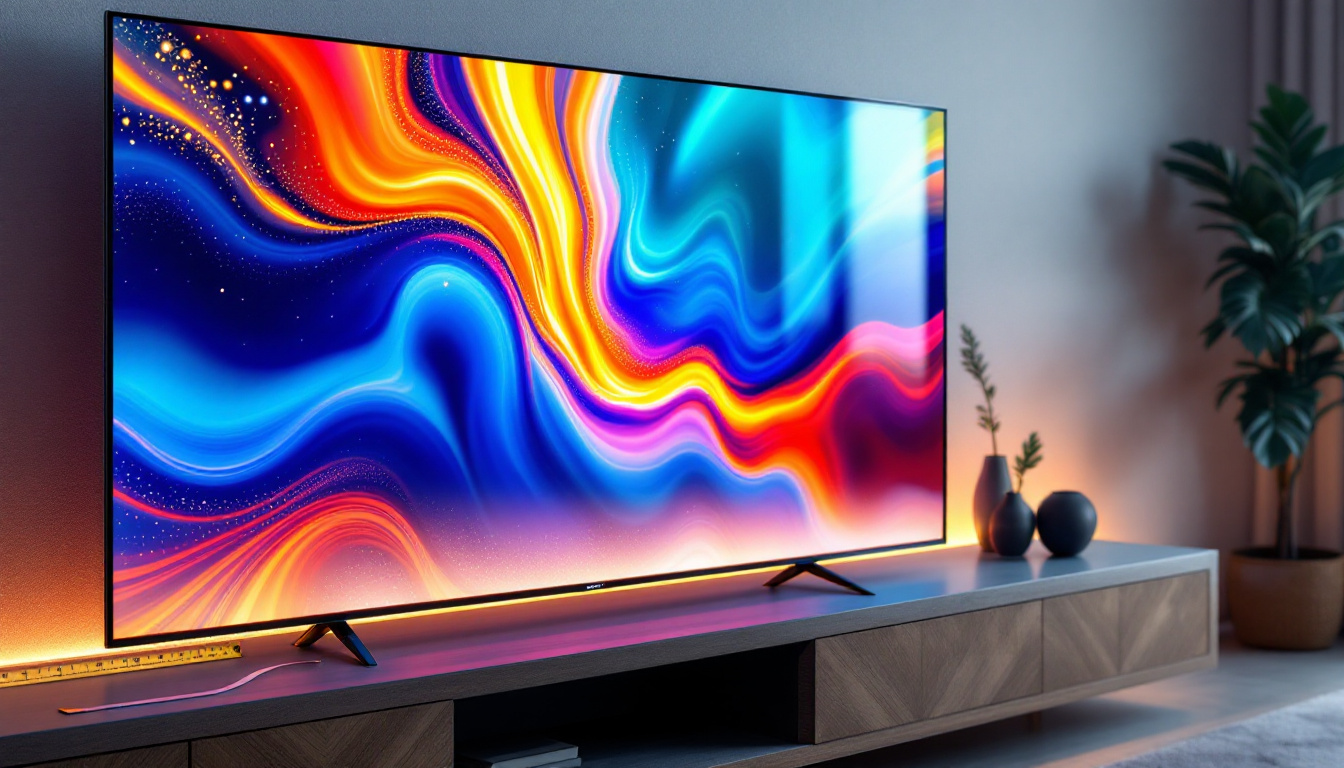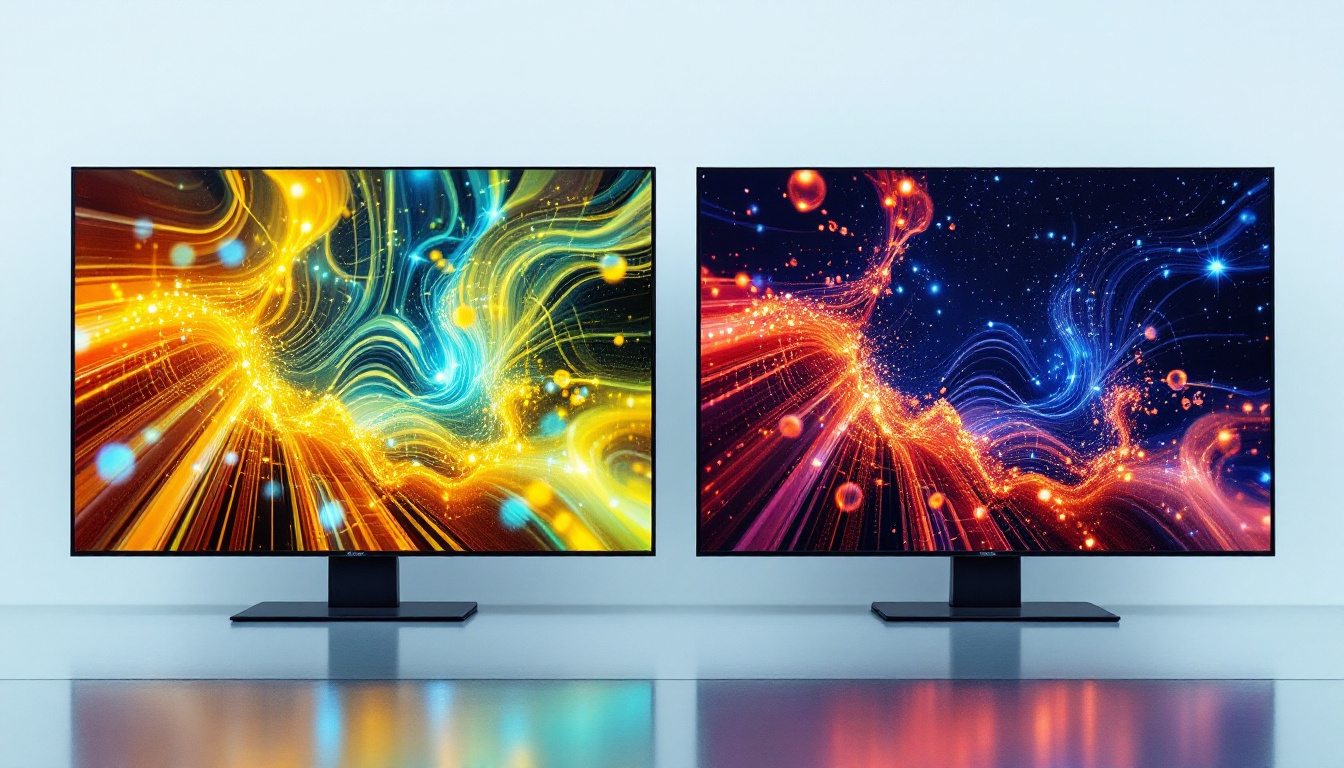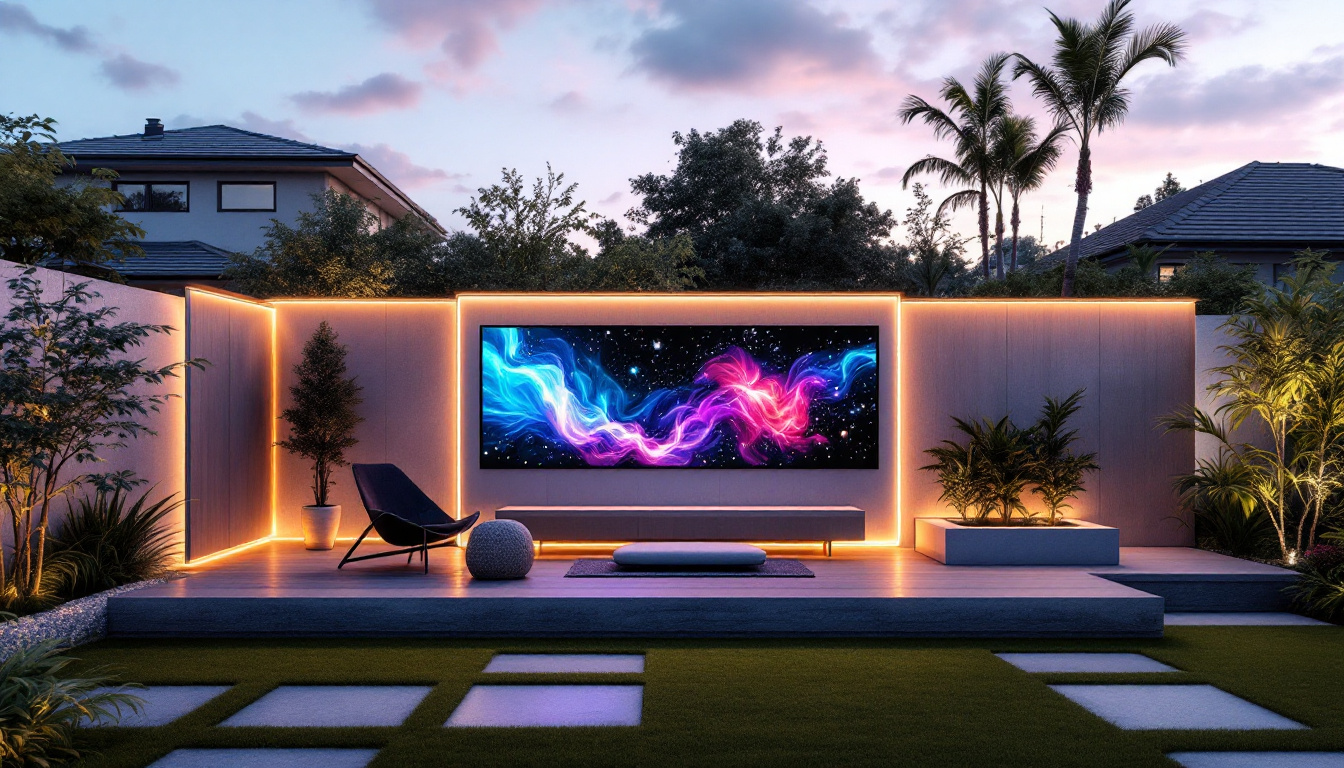In recent years, the technology behind display screens has evolved significantly, leading to the emergence of innovative solutions like transparent OLED screens. These screens not only offer high-quality visuals but also bring a futuristic aesthetic to various applications. This article delves into the intricacies of transparent OLED screens, their pricing, and how they compare to traditional LED displays.
Understanding Transparent OLED Technology
Transparent OLED (Organic Light Emitting Diode) screens are a groundbreaking advancement in display technology. Unlike conventional LCD screens that require a backlight, OLED screens emit their own light, allowing for deeper blacks and more vibrant colors. The transparent variant takes this a step further by allowing light to pass through the display, creating a unique visual experience.
How Transparent OLED Works
Transparent OLED screens consist of layers of organic compounds sandwiched between two electrodes. When an electric current is applied, these compounds emit light. The transparent nature of the screen is achieved by using a special substrate that allows visibility from both sides. This means that users can see content displayed on the screen while still being able to view the environment behind it.
This technology is particularly beneficial in applications where visibility is crucial, such as in retail displays, automotive interfaces, and augmented reality systems. The ability to overlay digital information on a real-world background opens up new possibilities for interactive experiences. For instance, in augmented reality applications, users can interact with digital elements that blend seamlessly with their physical surroundings, enhancing both engagement and functionality.
Applications of Transparent OLED Screens
Transparent OLED technology is versatile and can be used in various sectors. In retail, for example, stores can use these screens to showcase products while still allowing customers to see the items behind the display. This not only enhances the shopping experience but also serves as an effective marketing tool. Retailers can create dynamic advertisements that change based on customer demographics or time of day, making the shopping environment more personalized and engaging.
In the automotive industry, transparent OLEDs can be integrated into windshields or car windows, providing drivers with essential information without obstructing their view. Imagine a windshield that displays navigation prompts, speed limits, and even hazard warnings directly onto the glass, allowing for a safer driving experience. Furthermore, the technology is making its way into smart home devices, offering a sleek and modern interface for controlling various home functions. Homeowners can use transparent OLED screens to manage lighting, security systems, and even entertainment options, all while maintaining an unobstructed view of their living spaces. This integration not only enhances convenience but also adds a futuristic aesthetic to home environments.
Comparing Transparent OLED and Traditional LED Displays
While transparent OLED screens offer unique advantages, it is essential to compare them with traditional LED displays to understand their respective benefits and drawbacks. Each technology has its strengths, and the choice between them often depends on the specific use case.
Visual Quality
One of the most significant advantages of transparent OLED screens is their superior visual quality. They provide deeper blacks, more vibrant colors, and a wider viewing angle compared to traditional LED displays. The absence of a backlight in OLED technology allows for true black levels, resulting in a more immersive viewing experience.
In contrast, traditional LED displays often struggle with color accuracy and contrast, especially in brightly lit environments. While advancements in LED technology have improved performance, OLED screens still maintain a lead in visual fidelity. Furthermore, the rapid response time of OLEDs reduces motion blur, making them ideal for fast-paced content such as sports or action films, where clarity is paramount.
Transparency and Aesthetics
Transparent OLED screens excel in terms of aesthetics and functionality. Their ability to blend seamlessly into environments makes them ideal for modern architectural designs and innovative product displays. The transparency allows for a unique interaction between the physical and digital worlds, enhancing the overall experience. This feature is particularly appealing in retail spaces, where products can be showcased behind a transparent screen that displays dynamic content without obstructing the view of the merchandise.
Traditional LED displays, while effective for many applications, do not offer this level of integration. They are typically opaque and can be bulky, which may detract from the design of a space. In scenarios where aesthetics are a priority, transparent OLED technology is often the preferred choice. Additionally, the ability to customize the shape and size of transparent OLED panels opens up new possibilities for creative installations, allowing designers to push the boundaries of conventional display formats.
Cost Considerations
When it comes to pricing, transparent OLED screens tend to be more expensive than traditional LED displays. The advanced technology and materials used in manufacturing transparent OLEDs contribute to their higher cost. However, as the technology matures and production scales increase, prices are expected to decrease over time.
Investing in transparent OLED technology may yield significant returns in specific applications, especially in retail and advertising, where the unique visual appeal can attract more customers. Businesses must weigh the initial investment against the potential benefits to determine if transparent OLEDs are the right choice for their needs. Moreover, the longevity and energy efficiency of OLED displays can lead to lower operational costs over time, making them a more sustainable option in the long run. As energy consumption becomes an increasingly important factor in technology choices, the efficiency of OLEDs could further enhance their appeal in a market that is progressively leaning towards eco-friendly solutions.
Pricing of Transparent OLED Screens
The price of transparent OLED screens can vary widely based on several factors, including size, manufacturer, and specific features. As of now, the cost of these screens is generally higher than that of traditional LED displays, reflecting the cutting-edge technology involved.
Factors Influencing Price
Several factors influence the pricing of transparent OLED screens. First and foremost is the size of the display. Larger screens typically command higher prices due to the increased material and manufacturing costs. Additionally, the complexity of the technology and the quality of the components used can significantly impact the final price.
Another factor to consider is the manufacturer. Established brands with a reputation for quality may charge a premium for their products, while newer entrants to the market might offer more competitive pricing. It’s essential to evaluate the brand’s track record and customer reviews when making a purchasing decision.
Moreover, the specific features of the transparent OLED screens, such as touch sensitivity, resolution, and brightness levels, can also affect pricing. Screens equipped with advanced features like high dynamic range (HDR) or enhanced color accuracy may come at a premium. As the technology evolves, we may see more innovative features introduced, which could further influence the pricing landscape.
Current Market Prices
As of 2023, the price range for transparent OLED screens can start from a few hundred dollars for smaller models and can exceed several thousand dollars for larger, high-end displays. For instance, a small transparent OLED display might be priced around $1,000, while a larger, commercial-grade screen could reach upwards of $10,000 or more.
It’s important to note that prices are subject to change as technology advances and production processes improve. Keeping an eye on market trends and emerging manufacturers can provide opportunities for more affordable options in the future. Additionally, the growing interest in augmented reality (AR) and virtual reality (VR) applications may drive further innovation and competition in the transparent OLED market, potentially leading to more cost-effective solutions for consumers and businesses alike.
Furthermore, the application of transparent OLED technology in various industries, such as retail, automotive, and architecture, is also influencing pricing dynamics. For example, retailers are increasingly adopting these displays for advertising and enhancing customer experiences, which may lead to bulk purchasing and negotiated pricing. As demand grows, economies of scale could play a significant role in reducing costs, making transparent OLED screens more accessible to a broader audience.
Future of Transparent OLED Technology
The future of transparent OLED technology looks promising, with ongoing research and development aimed at enhancing performance and reducing costs. As industries continue to explore innovative applications for this technology, the potential for growth is substantial.
Advancements in Manufacturing
Manufacturers are constantly seeking ways to streamline the production of transparent OLED screens. Innovations in materials and processes could lead to more efficient manufacturing, ultimately driving down costs. As economies of scale are achieved, the price of transparent OLED displays may become more accessible to a broader range of consumers and businesses.
Furthermore, advancements in display resolution and color accuracy are expected to enhance the overall quality of transparent OLED screens, making them even more appealing for various applications.
Expanding Applications
As the technology matures, the range of applications for transparent OLED screens is expected to expand. Beyond retail and automotive uses, industries such as healthcare, education, and entertainment are likely to adopt this technology. For instance, transparent displays could revolutionize how information is presented in hospitals or educational settings, offering interactive and engaging experiences.
Moreover, as smart cities and the Internet of Things (IoT) continue to develop, transparent OLED screens may play a crucial role in creating more integrated and connected environments. The ability to overlay digital information onto physical spaces can enhance communication and interaction in urban settings.
Conclusion
Transparent OLED screens represent a significant leap forward in display technology, offering unique advantages over traditional LED displays. Their superior visual quality, aesthetic appeal, and potential for innovative applications make them an exciting option for various industries.
While the current pricing may be a barrier for some, the future of transparent OLED technology looks bright, with advancements in manufacturing and expanding applications likely to make these screens more accessible. As businesses and consumers continue to explore the possibilities of transparent displays, it is clear that this technology will play a vital role in shaping the future of visual communication.
In summary, understanding the nuances of transparent OLED screen pricing and technology can help individuals and businesses make informed decisions about their display needs, paving the way for a more interactive and visually stunning future.
Discover the Future of Display Technology with LumenMatrix
Ready to elevate your visual communication with the latest in display innovation? LumenMatrix is at the forefront, offering a wide array of LED display solutions that are designed to captivate and engage. From transparent OLED screens that blend seamlessly into any environment to dynamic indoor and outdoor LED walls, vehicle displays, and more, our products are crafted to revolutionize your space and message. Check out LumenMatrix LED Display Solutions today and step into a world where your brand and content shine brighter than ever.










